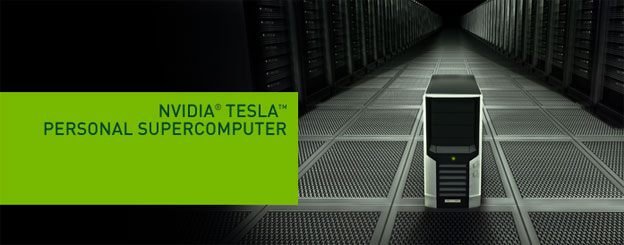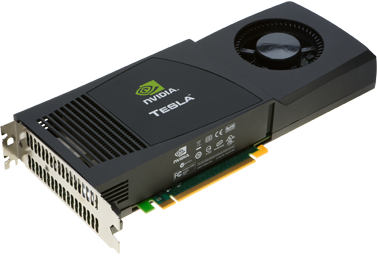What is a Supercomputer?
A supercomputer is a computer that is among the largest, fastest or most powerful of the computers available. Late 2007 the fastest supercomputers operate on the order of more than 200 teraflops (that's computer lingo for trillions of operations per second!). And supercomputers are being improved all the time! Soon they will operate on the petaflop-scale (that's one quadrillion operations per second!).
 This is a modern supercomputer. It is actually a cluster of numerous computers that are linked together to make them far more powerful. Courtesy of UCAR Digital Image Library.
This is a modern supercomputer. It is actually a cluster of numerous computers that are linked together to make them far more powerful. Courtesy of UCAR Digital Image Library.NVIDIA® Tesla™ Personal Supercomputer
Desktop supercomputers became a reality today as Nvidia announced the release of its new GPU-based Tesla personal supercomputer.
 The Tesla personal supercomputer is claimed to offer up to 250 times the performance of a standard PC or workstation, yet remains small enough to sit on an office desk and plug into a standard power strip. The Tesla personal supercomputer is made possible in part to Nvidia’s CUDA parallel computing architecture, where GPUs and CPUs work in tandem to greatly enhance the performance of complex, data-intensive computations.
The Tesla personal supercomputer is claimed to offer up to 250 times the performance of a standard PC or workstation, yet remains small enough to sit on an office desk and plug into a standard power strip. The Tesla personal supercomputer is made possible in part to Nvidia’s CUDA parallel computing architecture, where GPUs and CPUs work in tandem to greatly enhance the performance of complex, data-intensive computations. At the heart of the new Tesla personal supercomputer are three or four Nvidia Tesla C1060 computing processors, which appear similar to a high-performance Nvidia graphics card, but without any video output ports. Each Tesla C1060 has 240 streaming processor cores running at 1.296 GHz, 4 GB of 800 MHz 512-bit GDDR3 memory and a PCI Express x16 system interface. While typically using only 160-watts of power, each card is capable of 933 GFlops of single precision floating point performance or 78 GFlops of double precision floating point performance.
At the heart of the new Tesla personal supercomputer are three or four Nvidia Tesla C1060 computing processors, which appear similar to a high-performance Nvidia graphics card, but without any video output ports. Each Tesla C1060 has 240 streaming processor cores running at 1.296 GHz, 4 GB of 800 MHz 512-bit GDDR3 memory and a PCI Express x16 system interface. While typically using only 160-watts of power, each card is capable of 933 GFlops of single precision floating point performance or 78 GFlops of double precision floating point performance.While the Tesla C1060 computing processors are powerful, they have a massively-parallel architecture that may have trouble with serial computing modes. The Tesla personal supercomputer also features a powerful Intel or AMD quad-core processor, which is another important component of the system, especially when dealing with these serial computing modes. The Tesla personal supercomputer includes at least 4 GB of system memory per included Tesla C1060 card and at least a 1200- to 1350-watt power supply. System noise is rated at less than 45 dbA and the supported operating systems include Windows XP, Red Hat and SUSE.
It is pretty clear that the Tesla personal supercomputer is not designed for PC gaming, but rather for highly computational research and professional work. Ideal types of applications for this system would likely include the processing of large sets of consistent data, such as transcoding a DVD or studying seismic activity. The GPU-based Tesla Personal Supercomputer is now available from retail HPC OEMs, system builders and resellers, including Dell, Asus, Western Scientific and Microway. Prices vary depending on configuration, but expect to pay around $10,000 for your own personal supercomputer.
NVIDIA® Tesla™ computing solutions enable the necessary transition to energy efficient parallel computing power. With 240 cores per processor and based on the revoluationary NVIDIA® CUDA™ parallel computing architecture, Tesla scales to solve the worlds most important computing challenges—more quickly and accurately. Video Courtessy YouTube.
Sources :





Post a Comment